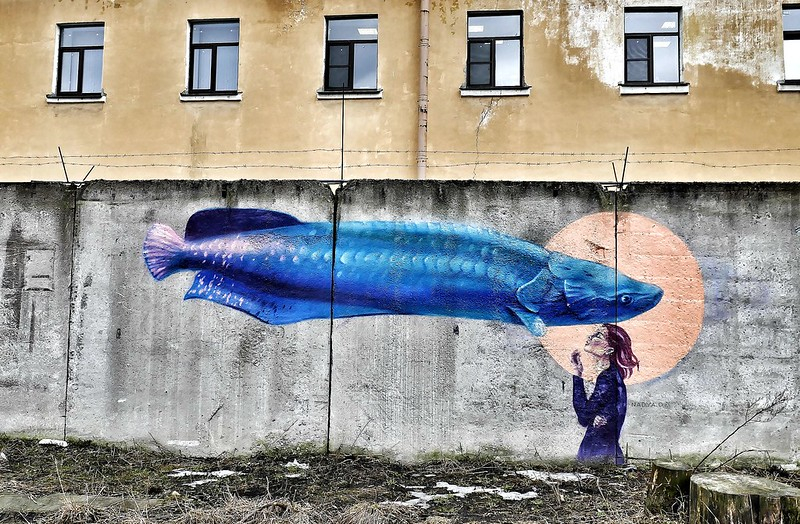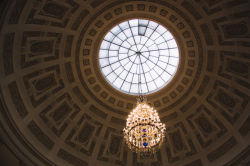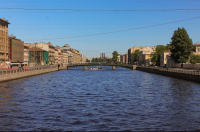Level one: museums
These days, street art has turned into an institutionalized art form, meaning that you can now enjoy the pieces at museums and art galleries, like your usual Rembrandt or Monet. Here in St. Petersburg, we are lucky to have Russia’s first open-air street art museum, located at a vacated factory facility. With weekly tours of the exhibition available in English, you will have the chance to learn more about the pieces “exhibited” on the walls, as well as learn more about the way street art came to be and the role it plays in today’s urban landscapes. [at the time of publication, the museum is temporarily closed, so stay tuned to its VK page to learn when it opens for visitors]
Another way to get a sneak peek into the world of street art is by attending fairly regular exhibitions at the city’s galleries and even the Russian Museum. These would usually introduce you to the works of selected artists, such as Pokras Lampas or St. Pete-based Maxim Ima, while also placing their pieces in a grander narrative. Essentially, it is your chance to see an academic take on street art culture and gain some hints on interpreting it. Stay tuned to our weekend guides, published every Wednesday, to never miss a cool exhibition.
Street Art Museum, St. Petersburg. Credit: Kristina1005 / Wikimedia Commons / CC BY-SA 4.0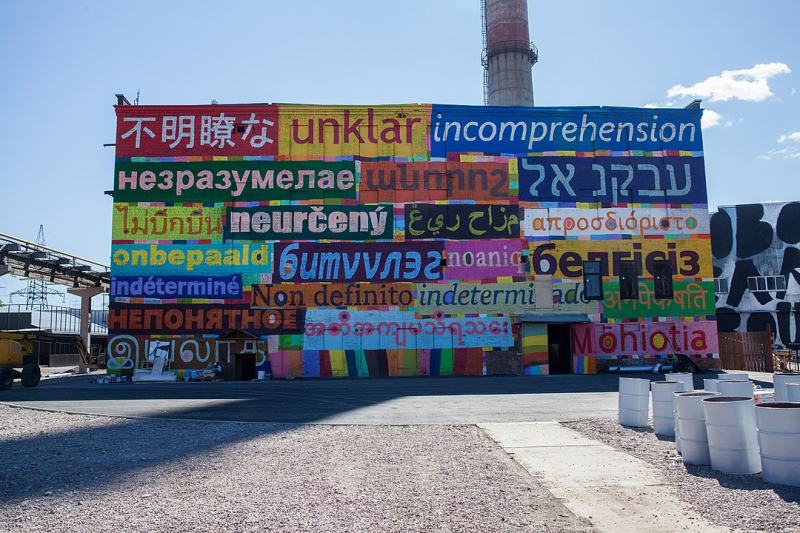
Level two: in real-life
Surprisingly for some, apart from being a cultural capital, St. Petersburg is also famous for its abundant and beloved street art pieces that turn into landmarks of their own. Some popular creations are portraits of singer Viktor Tsoy and actor Sergey Bodrov, the Colosseum hidden in one of the courtyards on Italianskaya St., a giant brightly colored Buddha on Vasilievsky Island, and abundant graffiti on the walls of Sevkabel Port.
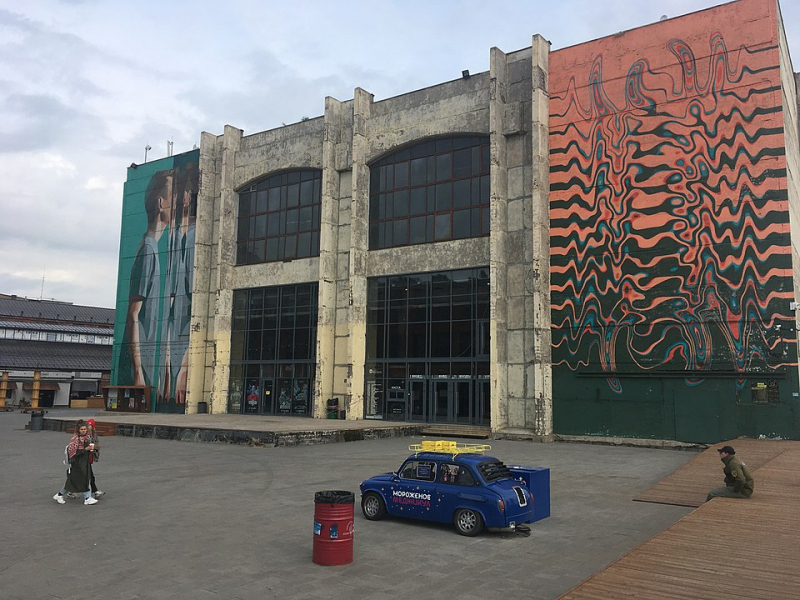
Graffiti at Sevkabel Port. Credit: Бегущий из города / Wikimedia Commons / CC BY-SA 4.0
Sometimes, an originally unsanctioned piece becomes so ingrained into the city’s landscape that when it finally gets covered, after months or years, it causes heated public debates and calls for its restoration. One such recent case was the graffiti of 20th century poet Daniil Kharms on the building he used to live in.
If you’d like to explore more of such significant and even touristy places, you can follow a guide, such as this one or this one. Though in Russian, they give you all the info you need: a picture of the graffiti or mural and its address – just put into your preferred maps app and set off exploring.
Level three: in the wild
Are you ready to call yourself a street art historian? The essence of this art form is its fleeting life: one day it’s there and the next day it’s gone. This means that if you want to experience the true street art scene, you have to constantly be on the lookout for new pieces.
Some tips would be to look up (many works hide on roofs) or down (the city’s sidewalks are covered with creations of Alesha, a street artist whose works often look like pencil drawings). Often times, you will find drawings hidden on road signs or ads, and some pieces will be concealed as buffs (erased or painted over graffiti pieces). You can also follow tags – stylized artists’ nicknames – to discover a unique route they laid out for those who cares to follow them.
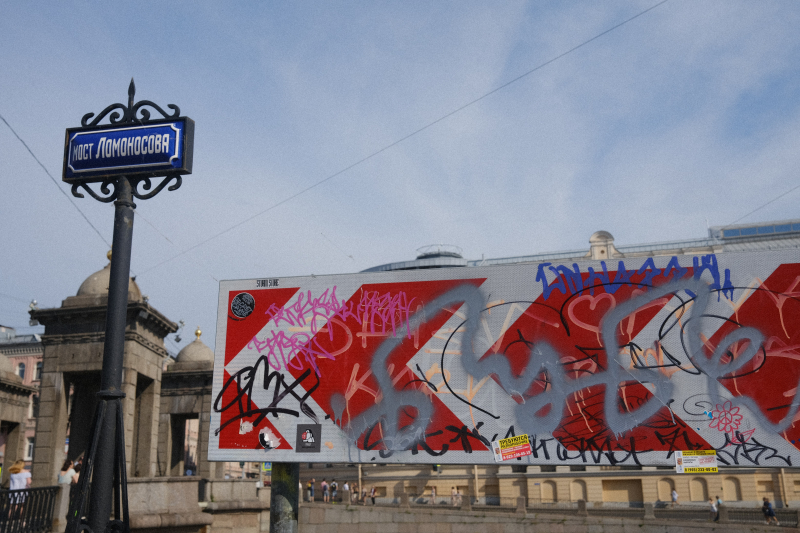
Credit: Christina Radevich (@chris_designer) on Unsplash
If all this sounds too complicated, there is a special street art map project, Street Art Cities, where each and every enthusiast can post a picture of the piece they found. So now you can follow in the footsteps of other explorers (here is the map of St. Pete), as well as upload any graffiti, mural or tag you find along the way.
We hope you have a great street art treasure hunt! Though we’re no graffitists, we also have a special tag you can follow to find all the quirky nooks and crannies of our favorite city.
